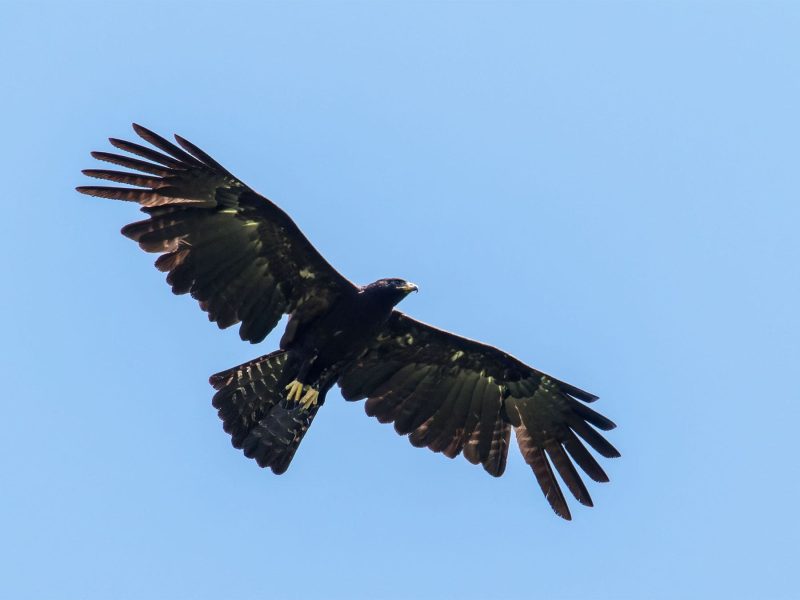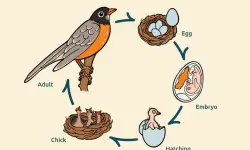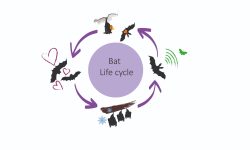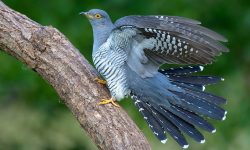Soaring silently through the dense forests of Asia, the Black Eagle (Ictinaetus malaiensis) is a raptor cloaked in mystery. Its dark plumage, shadow-like flight, and elusive nature have earned it a near-mythical reputation among birdwatchers and forest dwellers alike. Though not as widely known as its golden or bald cousins, the Black Eagle is a specialist of the treetops—a slow-gliding predator with a taste for the canopy’s secrets. This article explores what makes the Black Eagle one of Asia’s most fascinating birds of prey, from its haunting appearance and hunting strategy to its habitat preferences and elusive behavior.

The Ghost in the Canopy: A Unique Raptor
A Striking Shadow in Flight
The Black Eagle casts a spell the moment it appears. Cloaked in silken, jet-black plumage, this bird gleams with subtle shades of indigo and violet under dappled forest light. The effect is haunting—like moonlight on obsidian—adding to its reputation as a phantom of the canopy. Long, outstretched wings unfurl like velvet sails, and its sharp, wedge-shaped tail trails behind like a black banner slicing through the trees. A sudden flash of lemon-yellow cere and talons offers the only vivid color against its shadowy body, a signature contrast that elevates its mystique.
Though fierce in appearance, the Black Eagle is surprisingly slender for a bird of prey. Weighing just 1 to 1.6 kilograms, it is built not for brute strength but for aerial finesse. Its lean frame and broad wings make it an artist of the air, sculpting space with each deliberate beat and glide.
Floating Through Forest Silence
What truly separates the Black Eagle from its cousins is the way it flies—not with the assertive power of a hawk nor the towering spirals of a buzzard, but with a softness that seems unnatural for something so large. It doesn’t cruise the open skies; instead, it prefers the secretive airspace just above or within the forest canopy. With wings angled in a shallow V, it glides like a whisper, weaving through the treetops with uncanny grace.
To those who glimpse it in motion, the bird often appears to hover, drift, or melt into the trees, more spirit than flesh. No wing beats disturb the silence. No sound gives it away. It moves like a shadow given form, and disappears just as easily.
This style of flight isn’t just elegant—it’s a strategic marvel. By flying low and slow, the Black Eagle can scan branches and foliage for nests, chicks, or small mammals. It hunts not with a dive, but with a glide—a smooth, suspenseful approach that turns the entire canopy into its hunting ground. It is this spectral stillness, this ghostlike presence, that makes encounters with the Black Eagle so rare—and so unforgettable.
Specialized Feeding Strategy
Predator of Nests
In the secretive world of the canopy, the Black Eagle is a master of quiet sabotage. Unlike many raptors that hunt in open skies, this elusive predator prefers the hidden corners of the treetops—where life begins in fragile shells and soft down. It is here, among the woven cradles of songbirds and the hollows of arboreal mammals, that the Black Eagle reveals its specialization: it is a raider of nests.
With patient eyes and unwavering focus, the Black Eagle glides slowly over the forest, scanning every twist of vine and fork of branch for the telltale shimmer of feathers or the glint of an egg. Its diet is strikingly selective, consisting largely of birds and their young—pigeons, bulbuls, laughingthrushes, and sometimes even the soft, fluttering forms of flying lemurs or squirrels. These creatures, nestled in what they believe are safe sanctuaries, become unsuspecting targets.
But this eagle does not strike with speed. Instead, it drifts—a shadow in slow motion, pausing midair with outstretched wings, often hovering momentarily above a promising site. In one swift, controlled plunge, it drops into the foliage like a blade—taking its prize with surgical efficiency, then melting back into the trees before the forest can react.
Foraging with Precision
What enables such finesse is the Black Eagle’s astonishing control in flight. Its long wings, far from being a hindrance in the tangled canopy, act like flexible sails, adjusting subtly to each change in air current. Its tail, wedge-shaped and highly maneuverable, serves as a rudder, allowing it to pivot and bank through gaps no larger than its own body.
Unlike the raw power of a falcon’s dive, the Black Eagle’s hunting style is about balance, patience, and grace. It doesn’t chase prey—it stalks it, gliding silently and curving gently through vines and branches. It can tilt its body to peek into crevices, drift sideways to approach a hidden nest, or hover like a suspended kite, perfectly still in the breeze.
This combination of stealth, agility, and methodical focus makes it one of the most effective nest predators in the raptor world. And yet, despite its skill, it rarely draws attention to itself. There is no chaos in its hunt—only stillness, calculation, and a silent departure once the task is done.
Range and Habitat
Distribution Across Asia
The Black Eagle drifts silently through the misty treetops of South and Southeast Asia, weaving a path through some of the most ancient and untouched forests on Earth. Its range stretches like a dark thread along the spine of the Himalayas, winding down through India, Nepal, Bhutan, and into the shadowed jungles of Myanmar, Thailand, Laos, Cambodia, and Vietnam, finally reaching the emerald highlands of southern China and the Malay Peninsula.
Despite this broad geographic reach, the Black Eagle is far from common. Its presence is as scattered as it is elusive, bound not by borders but by the availability of deep, undisturbed forest. It is a bird of altitudes and silence, most often encountered at mid to high elevations up to 3,000 meters, where human footprints are few and the forest canopy remains unbroken. For many birders, spotting a Black Eagle is not just an observation—it’s a moment of reverence. In birdwatching circles, it’s spoken of as a “lifer”—a species so rare and unforgettable, it becomes a personal milestone.
Forest Dependency
The Black Eagle does not adapt easily to the patchwork habitats tolerated by some of its kin. It is a creature of mature, intact forests, where time has allowed the trees to grow tall, the undergrowth to flourish, and the ecosystem to stabilize. These are not just places to hunt—they are sanctuaries, both fortress and larder. Within the folds of the canopy, the eagle finds everything it needs: nests to raid, tall snags for perching, and secret spaces for breeding.
It avoids the fragmented edges of development, the cleared hillsides, and the plantations that sprawl across much of its historical range. It needs continuity—a seamless stretch of treetops where it can move unseen and unchallenged. This heavy dependence on pristine forest makes the Black Eagle especially vulnerable to human activity. Logging, road building, monoculture agriculture, and even selective deforestation can shatter its world. Remove the canopy, and the eagle has nowhere to glide, nowhere to hide, and nowhere to nest.
In this way, the Black Eagle is more than a bird—it is a sentinel of forest health. Its presence signals richness, complexity, and quiet continuity. Where the Black Eagle still flies, the forest is still whole.
Breeding and Nesting
Nesting Behavior
Hidden among the uppermost limbs of towering trees, the Black Eagle’s nest is a fortress suspended in green shadow. High above forest clearings or clinging to the edge of steep valleys, these large stick nests are carefully assembled on broad, horizontal branches—places few predators can reach and fewer humans ever see. Each nest begins as a modest structure of twigs and leafy branches, but over time, as pairs return season after season, it grows into a massive platform, reinforced with fresh material and lined with softer vegetation.
The eagle’s devotion to place is as steadfast as its bond. Monogamous by nature, Black Eagles form long-term pairs that return to the same territory—and often the same nesting tree—for many years. These tall sentinels of the forest become part of the birds’ life story, passed down and rebuilt across breeding cycles. From below, the nest may be all but invisible, concealed within a tangle of leaves and epiphytes, but from above, it offers the eagle a commanding view of its wooded domain.
Raising Young
The rhythm of reproduction varies with geography, but most breeding occurs between December and June, coinciding with seasonal abundance and milder weather. Within the high nest, the female lays one or two eggs, ivory-white and slightly speckled, nestled safely in the center of the platform. But this is not a peaceful nursery—only one chick usually survives, a result of natural competition between siblings or the simple challenge of feeding more than one in such demanding terrain.
For weeks, the female remains close, sheltering the nestling from harsh sun and sudden rain, while the male patrols the forest, gliding silently from ridge to ridge in search of prey. When he returns, he brings not just food but the lessons of survival. As the chick grows, it peers over the nest edge, tests its wings, and watches the world it will one day glide through.
At around 70 to 80 days, the young eagle takes its first leap into the air—a tentative, fluttering flight into the unknown. But even after this bold beginning, it remains close to its parents, learning the ways of the canopy, how to float among the leaves, how to read the forest’s movement, and how to hunt without being seen. Independence comes slowly in a world so vast and complex, but under the watchful eye of its silent-winged guardians, the forest becomes its home.
Conservation Status and Threats
Not Globally Threatened, But Regionally Vulnerable
On paper, the Black Eagle seems secure. It is currently classified as Least Concern by the IUCN, thanks to its wide geographic range spanning much of South and Southeast Asia. But such labels can be misleading. In many parts of its native habitat—especially across the fragmented forests of Southeast Asia—this eagle is fading into silence. Sightings grow fewer. Glides across the canopy become rare.
The greatest threat it faces is not from hunters or poisons, but from the relentless erasure of its world. Logging roads creep deeper into old-growth forests. Swathes of rainforest vanish under oil palm plantations, slash-and-burn fields, or expanding urban edges. For a bird so utterly tied to the treetop realm, even selective deforestation can be catastrophic. Without continuous canopy cover, the Black Eagle cannot nest, cannot hunt, cannot exist.
And yet, its presence—or absence—tells a greater story. The Black Eagle is more than just a species; it is a living barometer of forest health. When it glides over a landscape, it signals the endurance of ecological integrity. When it disappears, so too does the complex web of life that the forest once held.
Protection and Awareness
Saving the Black Eagle means saving the forests it depends on. Conservation efforts have increasingly focused on protecting core habitats—ensuring that large tracts of undisturbed forest remain untouched, and that logging is curbed or banned in sensitive areas. In regions like the Western Ghats of India or the mountain forests of Thailand, local and national parks have provided crucial refuge.
Community involvement is also key. In areas where indigenous groups and villagers share land with wildlife, raising awareness about the eagle’s role in the ecosystem has helped shift perspectives—from indifference to pride. Birdwatching and ecotourism, especially in biodiversity hotspots, are emerging as powerful conservation tools. When travelers come hoping to glimpse a Black Eagle drifting across a misty ridge, they bring not just cameras, but visibility, income, and motivation for locals to protect what remains.
Ultimately, the fate of the Black Eagle is tied to the fate of Asia’s forests. If we preserve the canopy, this silent glider will continue to haunt the treetops—an emblem of wildness and quiet strength. But if the trees fall, so too will the shadow that once moved like wind between their leaves.
Why the Black Eagle Captivates Birdwatchers
The allure of the Black Eagle lies not in spectacular speed or brute strength, but in its grace, stealth, and mystery. It is a master of quiet movement, a forest spirit that reveals itself only briefly before vanishing behind the trees. For birdwatchers, spotting one is like seeing a shadow given wings—a fleeting moment that leaves a lasting impression. Its haunting appearance, secretive habits, and uncanny gliding flight make it a symbol of wilderness that remains untouched. The Black Eagle is not just a raptor—it’s a reminder of the beauty and complexity hidden deep within Asia’s forests.
Conclusion
The Black Eagle is one of the most enigmatic birds of prey in Asia—a silent shadow in a world of noise, gliding through ancient trees with unmatched elegance. From its striking black plumage to its delicate nest-hunting strategy, every aspect of its biology reflects a life lived among the leaves and light of the canopy. To protect the Black Eagle is to protect the forest itself, and in doing so, preserve one of nature’s most elusive aerial artists. For those lucky enough to witness it, the sight of this dark-winged phantom drifting across the treetops is a moment not soon forgotten.






